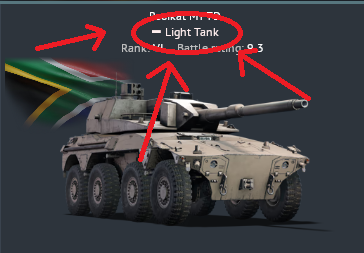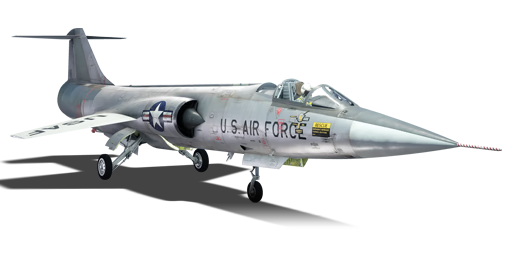- Yes, I would like to see the T-72 Ural added to the game
- Maybe
- Unsure
- I don’t think the Ural should be added to the game
Note - This suggestion cover the T-72 Ural series as a whole since the 1973 and 1974 production models only difference has no affect of the vehicles capabilities (which is also why the 2 versions are not mentioned in the poll), however this does not cover the modernization in the 1980’s due to how different the vehicle is following modernization as it included a number of changes.
Background
The T-72 Ural series of main battle tanks were the first iterations of the T-72 main battle tank built by the Soviet Union in the 1970’s, the Ural can be categorized into different groups though over 5 of the 6 years of production improvements were made of the vehicles with only the ones built in the final year of production seeing no changes, the groups in particular are the origin Ural variants built in 1973 and 1974, the early Ural-1 variants from 1975 to 1976, and the late Ural-1 variants built between 1977 to 1979 however in particular this suggestion will be based on the T-72 Ural.
The T-72 Ural series was the smallest production series of the T-72, these vehicles represent the easiest forms of the T-72, despite there being production differences between them from 1973 to 1974 both variants can be best described as the same exact vehicles, the main reason why however they are considered as different models slightly is that the original ones which were from 1973 had their IR spotlight coaxial to the main gun on the gunners side of the turret however the vehicles from 1974 had them mounted on the commanders side of the turret which was the only difference between them, and the vehicles from 1973 did see the IR lights relocated to the commanders side of the turret as well as the change was all in order to improve the safety of the driver and would be where all further T-72 tanks would place the IR spotlight.
The vehicle’s armor was also different from other main battle tanks of the era in terms of Soviet designs as its main protection was made up of both composite armor and more traditional cast armor despite the fact that the T-64 series had been using composite armor in the turret itself. In particular its UFP had the same armor layout as the T-64A however its turret was made of cast steel which was assembled as two parts with the roof being completely separate from the turret. The reason the turret was made of cast steel and no composite was due to how the Uralvagonzavod plant had perfected production of one piece cast turrets which would be the reason for the usual turret armor choice though this later changed to composite in 1977, the original turrets thickness was still quite significant with official sources putting it at up to 410mm at least at the thickest parts of the turret cheeks with the thickness going down to 310 to 320mm at it’s edges, it’s gun mantlet however it somewhere around 350mm of armor as found by studies, this leaves it with very significant armor still however its performance is inferior to vehicles with composite armor as the later T-72 tanks proved such as the T-72A which used basically a turret with the general same size but with much greater protection, it should be noted that this early on the T-72 lacked any rubber side skirts but rather used the fish gill side skirts like the T-64A in-game. The vehicle used the 2A26M2 125mm cannon with the same 22 round autoloader as all T-72 variants with another 17 carried in loose stowage around the vehicle.
History
The T-72 as a whole despite its wide use in service with many nations and to this day was a vehicle whose existence was never meant to be, and indeed was a rare case of defiance in the Soviet Union which created something far better than what had been asked for. In the 1960’s the T-64 main battle tank was introduced into the Soviet army as the state of the art main battle tank which set the standard of protection of all future state of the art main battle tanks as they had greater protection and firepower than any previous main battle tank which set it apart from all other main battle tanks of the time. Despite all the incredible strengths of the T-64 it was not without its problems as there were many which limited its production and the ability to maintain such a vehicle. Earlier in the decade the Soviet Union had revealed the T-62 main battle tank designed by the Uralvagonzavod plant, it’s design benefitted from many of the advantages of the previous T-54/T-55 series of vehicles while introducing a number of improvements however the introduction of the T-64 only a few years after the T-62 saw it relegated instead into motorized rifle divisions, but early on the design of the T-64 would come back to be a issue as despite the order for Soviet production plants to switch to T-64 production they would not be able to produce the numbers they were required to produce no matter how hard they tired, as such in the later half of the 1960’s the VPK (Military-Industrial Commission of the USSR) initiated a program which would solve the main problem of production which was the engine which was difficult to produce as it was quite complex to build, 2 separate Soviet plants were tasked with creating new engines that could be used by the T-64 which would solve the problems and would be known as mobilization models which were just meant to be cheaper to allow for great numbers to be produced, the plants in question was in Leningrad and the other in Uralvagonzavod in which the latter was the same one which designed the T-62. In order to allow the plant to begin their work they were given one of the prototypes of the T-64A which they would study the design and be tasked with coming up with solutions to solve the vehicles issues.
(The image bellow is of the failed Object 167M which played a major role in the T-72 design as one of the biggest influences was the autoloader as it used the same style loader as the T-72)
After reviewing the prototype they had received the lead designer of the project, Leonid Kartsev who was also the lead designer for the competing Object 167M which loss the competition for the previous Soviet main battle tank design competition for which became the T-64 was unsatisfied with the vehicle innovations of the vehicle and it was here that things start to get off track as he had become set on taking what he saw as the best aspects of the T-64 into a comprehensive redesign. What would result from this was known as the Object 172 which would be based off the T-64 as the hull and turret were modified in order to allow the incorporation of a new engine and autoloader system, however once it had been discovered Kartsev came under scrutiny however after showing it off to the Minister of Defense Industry S.A Zverev with a demonstration of this autoloader system on the failed Object 167M with it’s AZ autoloader system Leonid Kartsev purposed that this autoloader system be installed into the T-64 which received positive response though initially the engine change was opposed by the defense minister initially however later accepted the change so instead of being punished for his defiance he was allowed to continue his work as he was ordered to produce 6 prototypes based off the T-64 however was specially ordered to not modify the suspension of hull.
Despite these specific orders the Object 172 quickly began to change internally as changes in the crew compartment were made to fit the autoloader and the engine compartment was likewise changed to fit the new engine which also required further changes to allow for them to be equipped, as a result what at first came out was a vehicle which was almost identical externally from the T-64A especially from the front however from the rear differences were noticeable as can be seen in the image above. The hulls themselves had different variations and the vehicles showed plenty of promise as the more modified vehicles performed the best and there were some negative remarks the designers were requested to try and rectify the problems discovered during testing before they would enter production and as a result by 1973 after much further modification the first production variant known as the Object 172M was accepted into production as the T-72 Ural.
The Ural designation itself came from the area in which they were tested which was the Ural mountain range. The first variation of the Ural was produced between 1973 to 1974 and was the smallest production series of the T-72 family and between the 2 years of production the only change seen was the location of the IR spotlight from the gunners side to the commanders side in order to improve the drivers safety but beyond this they remained the same and the vehicles produced in 1973 would see the IR light also relocated. From 1975 until 1979 the remaining Ural vehicles were of the Ural-1 variety otherwise known as the Object 172M1, not to be confused with the Object 172M-1 which is the T-72A. The Ural-1 series saw much greater improvements however at first was more or less the same as they had a slight improved turret in terms of protection and added a thermal sleeve for the main gun based off observation during testing however otherwise was more or less the same however 1976 production vehicles started to see a improved composite armor layout in the UFP however the full switch to this new UFP was not immediate as only by the time of the end of the Ural-1 production had the newer UFP design become standard in production. In 1977 a new turret known as the Kvartz turret which saw composite armor used greatly improving the turret protection and in 1978 a new gunner sight was added which added the ability of laser range finding which saw the older rangefinder deleted making the last variation of the Ural-1 visually very similar to the following T-72A with the only difference being the lack of smoke grenade launchers.
Specification
Weight - 41 tons max
Engine - 12 cylinder V-46-4; 780 hp (574 kW)
Max speed - 60 km/h forward and 4 km/h reverse (the same as other T-72 variants)
Gunner optic - TPD-2-49 (TPN-1-49-2 for night vision (Gen 1 NVD))
Commander optic - TKN-3M (Gen 1 NVD)
Armament
Main gun
2A26M2 cannon (39 rounds total (22 in autoloader))
Coaxial machine gun
1 x 7.62mm PKMT machine guns (2,000 rounds total)
Commander’s machine gun
1 x 12.7mm NSVT machine gun (300 rounds total)
Armor (Only includes that which is different from the T-72A in-game since the armor layout is very similar otherwise to the T-72A in-game)
Turret armor
Front - Up to 410mm (Likely varies and might have been higher however this is the official number), 350mm at the gun mantlet
Sides - 310 to 320mm (Turret cheek ends) 290mm
Hull Armor
Upper plater composite armor - 80mm RHA + 105mm glass textolite + 20mm RHA (UFP angled at 68 degrees)
Sources
Image sources







